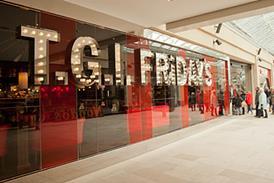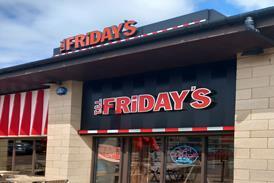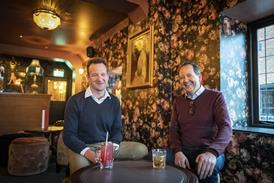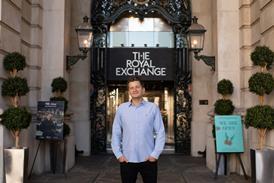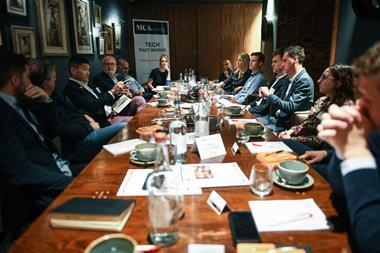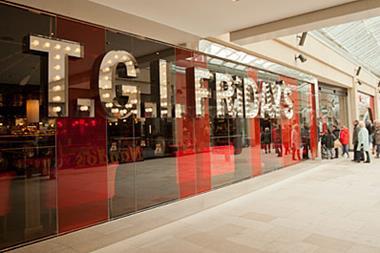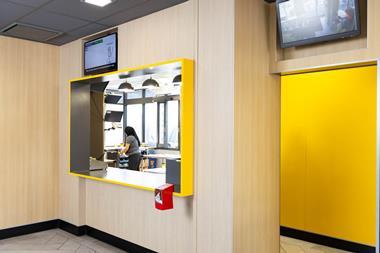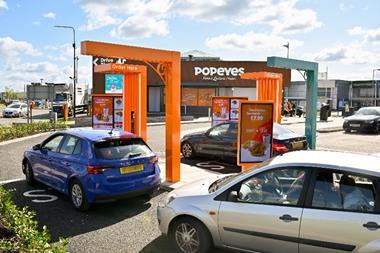Using machine learning and AI could deliver huge benefits to hospitality, but there are challenges. MCA and Punchh brought together marketing and IT directors to discuss how best to do it.
The eating and drinking out industry is getting very personal, very fast. The ordering kiosks in McDonald’s have many advantages for the efficiency of the McDonald’s operation, but for consumers they offer the chance to customise their meals to their own personal taste, like building a Big Mac with eight patties plus extra cheese and bacon.
It’s fantastic for Big Mac fans, but in the burgeoning world of technology and data, and how the combination of both can be used to lure consumers into greater spend and frequency of purchase, customising a burger is basic stuff.
Imagine if the next time that same customer walked into a McDonald’s and approached a kiosk, that kiosk recognised their face, greeted them by name, offered them the same customised Big Mac they ordered last time, plus a little freebie for being a loyal customer?
It isn’t far-fetched in the slightest, and thanks to the introduction of the kiosks, it’s eminently possible. But operators need to tread carefully when it comes to facial recognition, warns Helen Winnett, head of IT at Casual Dining Group.
“Facial recognition is fraught with issues,” she says. “We did consider it but backed away from it because you can make it over-complicated.”
Paul Jones, head of IT at The Alchemist, says facial recognition “can be a convenient thing. Say a customer walks into a venue, we know he’s Paul, we know he likes a Smoky Old Fashioned cocktail, so let’s get that ready for him. But there is a challenge in getting someone to opt in to that.”
Plus, post-GDPR, there are legalities to consider, not just today but in the future.
“One of the key considerations we have spoken about over the last few months has been from a data protection standpoint,” says Katie Evans, chief marketing officer at Burger King UK. “We need to be clear on the rules about things like this so we don’t end up falling foul of that legislation in years to come.”
Facial recognition is a “hard line to cross for consumers,” says Shyam Rao, co-founder and CEO at Punchh. “As a consumer, when you engage with a brand you like there is an implicit understanding that in exchange for the data they share, they get some value out of it. So they are willing to share data, but I think facial recognition transcends that.”
It’s a “very delicate game” says Jeremy Dunderdale, head of IT at TGI Fridays. “Using the tools you already have, like the smartphone, is a lot safer.”
Dynamic pricing
What is less complex, but by no means without its issues, is dynamic pricing. The advent of kiosks and digital menu boards means, in theory at least, prices could be changed in real time to respond to any number of variations, from sudden changes in the weather to traditionally quiet times of the day when trade usually slows.
“Whether it’s that quiet time between 4pm and 7pm, or that late-night post-pub burger on the way home, having digital menu boards does offer us flexibility,” says Evans. “It also allows us to put an offer on the menu that is most relevant to the customer at
that time. It doesn’t need to be a massive price differential, it’s just managing supply and demand.”
Dunderdale says he “does struggle slightly with dynamic pricing, it’s like when you’re forced to go on holiday during school holiday periods and it’s twice the price. As a consumer, my concern would be price increases.”
But if you never put prices up, just bring them down, that risk is removed, says Sam Bourke, marketing director at ETM Group.
“I love the idea of dynamic pricing, particularly for brands like ours,” she says. “We had this conversation recently because we are planning our January activity, because January is a ghost town and you want to entice people in. I did think dynamic pricing could be the way forward, and it wouldn’t be about putting prices up, it would be about putting them down to attract in new customers and experience our menu when they otherwise wouldn’t.”
It can also depend on the brand, says Ewa Kubianka, marketing manager at Tortilla. “For a brand like ours, where value for money is a crucial thing, messing with dynamic pricing could be very risky so I don’t think that would work for us,” she says. “And there are tech issues, which are much trickier than they should be in theory.”
James Newman, marketing director at Gusto, agrees, saying “trying to get our PoS to integrate with best-in-class is an absolute impossibility, it’s a walled garden.
“You are totally beholden to using that particular PoS system and its loyalty programmes. There is a requirement in our industry for the beast that is PoS to accept that this a new dawn, a new world, and open up their systems and become more egalitarian to help their customers out.”
Ultimately, he adds, “if the PoS doesn’t integrate, the whole idea of personalisation is shot through because you’ve got one element here and one over there, and the two don’t talk.”
Not only that, but as marketing teams continue to shrink, trying to draw any conclusions from the mass of data available becomes harder, thanks to a lack of available resource to interpret it.
“There is a huge amount of data you can collect from multiple sources but we have a small team,” says Maria Hamilton, CRM manager at Fuller Smith & Turner. “We don’t have an army of people to analyse it, so we organise our customers into profiles and categories rather than on an individual basis because we don’t have the resource to service that way of doing it at this stage.”
Social
A quick way to get personal with customers, or potential customers, especially for a smaller business, is to tap into the precise targeting offered by social media.
“I’ve been putting more resource and time into social than CRM,” says Bourke. “If it’s not overt, if it’s not asking them for an email address but you’re using their data to serve something useful to them, then people are more forgiving.”
She says by using Facebook to target Game of Thrones fans for a theme night she was able to identify 3,000 people, create an ad and serve it to them with “very little budget.” The event sold out in 24 hours.
Still, lack of resource remains a problem for marketing teams around the world, says Rao. “They tend to be two or three deep, so no one has any time. We are working towards having just one screen which says ‘today, based on the weather or sports, if you run a certain campaign for this segment, in this market, we expect 100% ROI, do you want to run it, yes or no?’
“We are focused on making it easy, but the challenges are not lost on anyone. There are so many tools, so much data, how do you make it useful? And that’s what we are trying to solve.”
Precis
TECH
How to give hospitality the personal touch
The eating and drinking out industry is getting very personal, very fast. The ordering kiosks in McDonald’s have many advantages for the efficiency of the McDonald’s operation, but for consumers they offer the chance to customise their meals to their own personal taste, like building a Big Mac with eight patties plus extra cheese and bacon.


